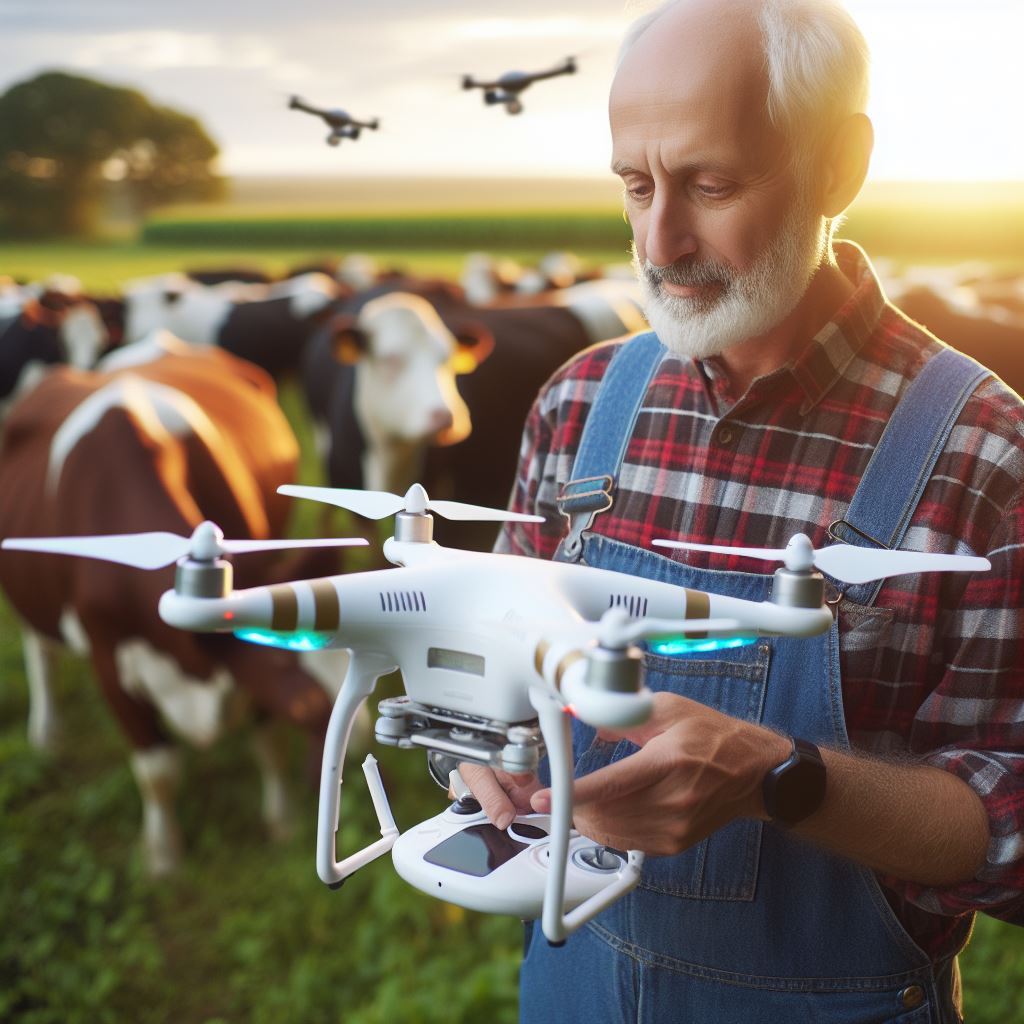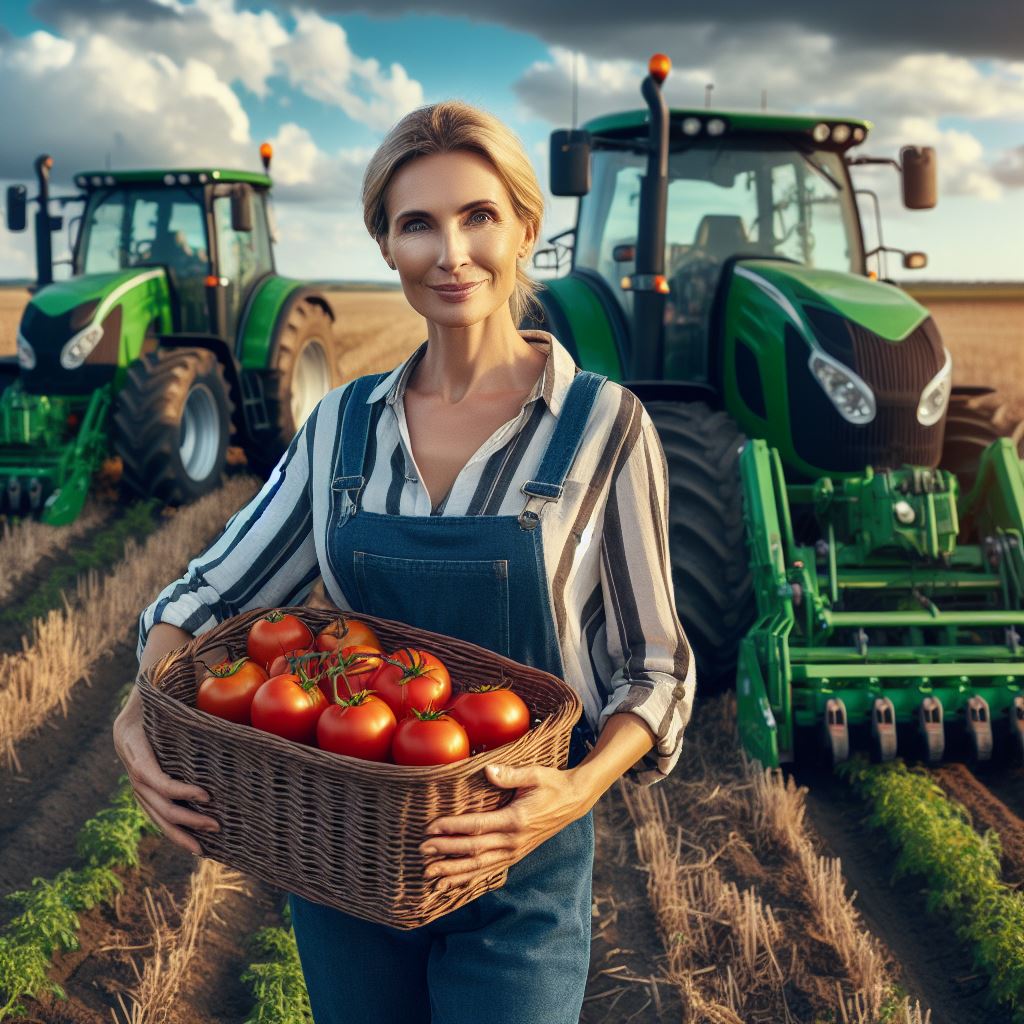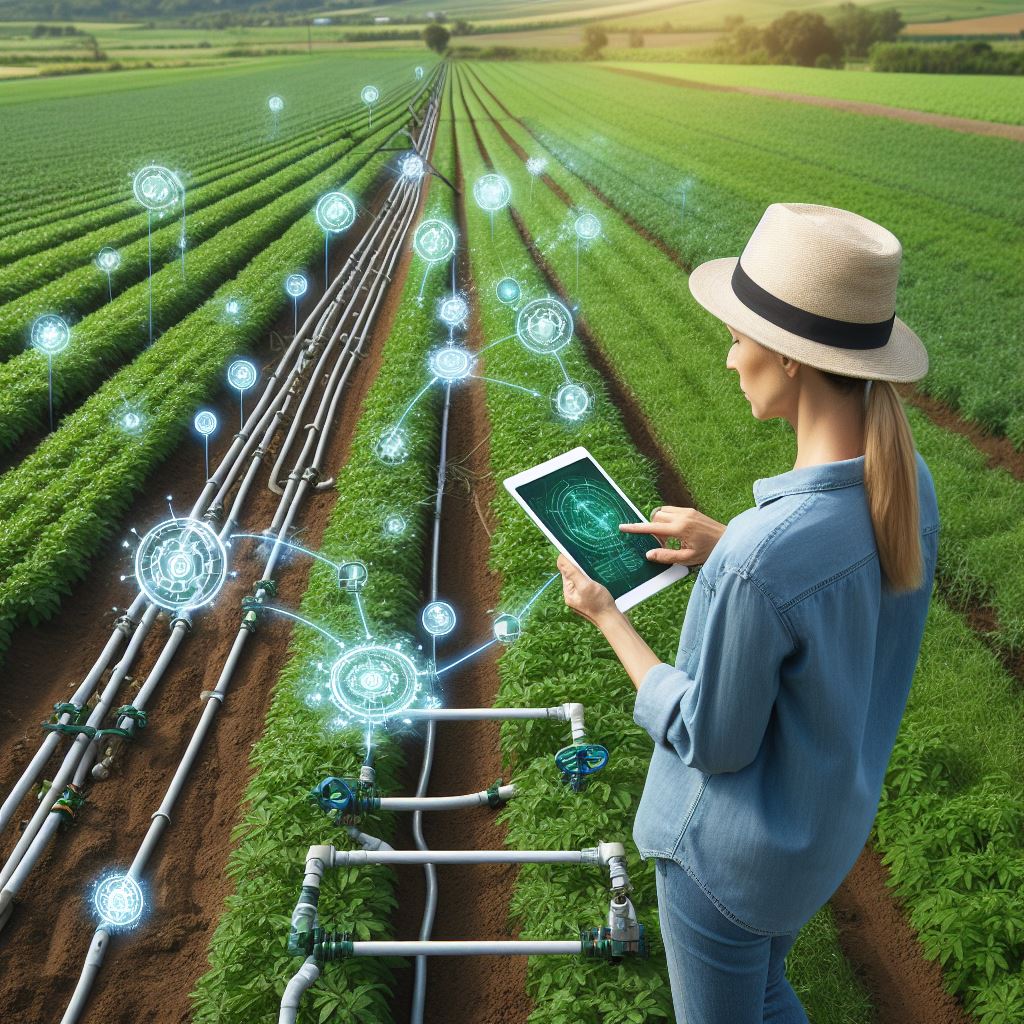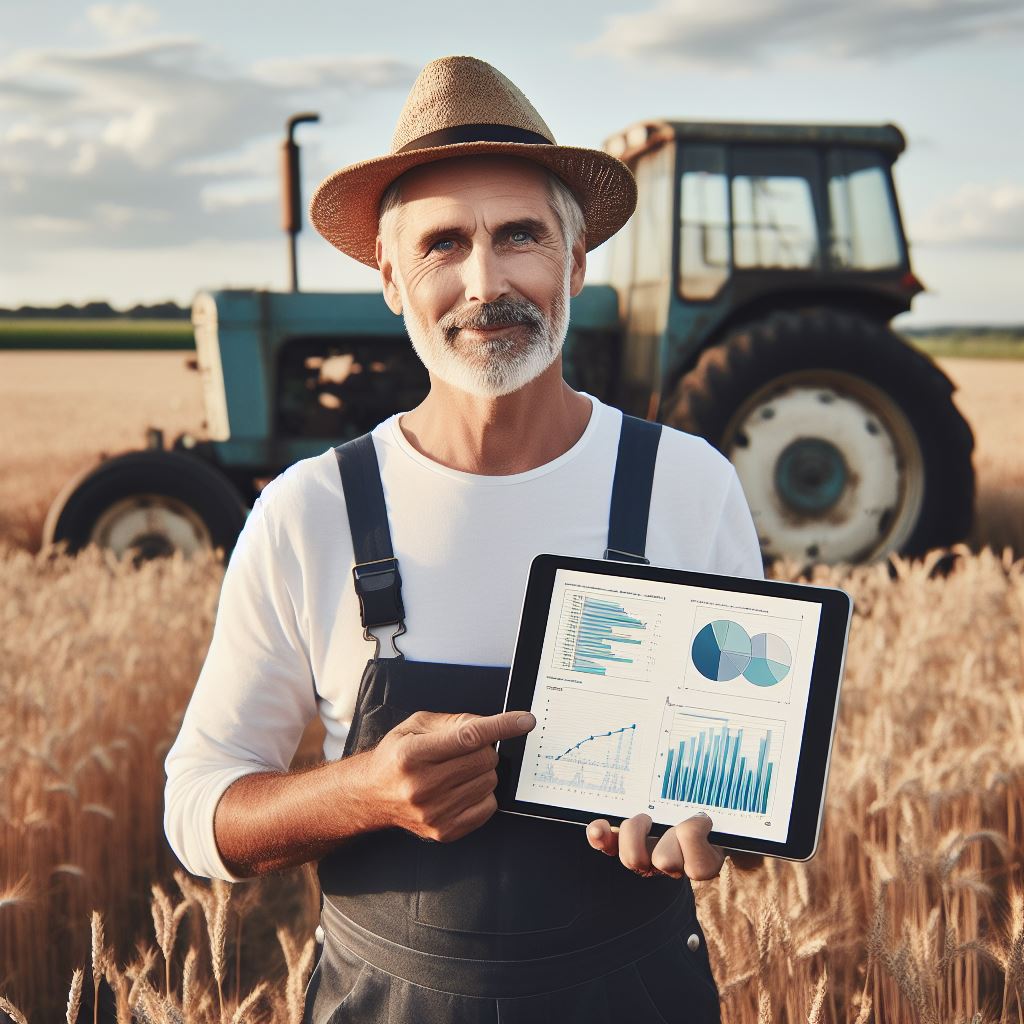Introduction
Agri Drones Livestock Monitoring Tech is revolutionizing agriculture by leveraging aerial monitoring and advanced data collection capabilities.
Specifically, these drones enable efficient observation of livestock health, location, and movements.
Sensors and cameras on the drones gather key data to optimize animal care remotely.
This provides real-time insight so farmers can quickly address any issues found that could impact health or cause losses.
Drones are taking over manually checking on herds, which allows staff to focus their time on other critical ranching tasks.
Overall, agri-drones are innovative tools revolutionizing livestock operations like cattle ranches with their technologies.
This blog post will focus specifically on how agri-drones’ emerging livestock monitoring technologies are benefiting animal agriculture sectors like cattle ranching.
Using drones to observe livestock allows issues to be identified early for prompt treatment, improving welfare.
Drones also automate data gathering on things like injuries, illness, birthing, or location changes.
This data optimizes daily care and provides analytics over time for better herd management decisions.
Additionally, drones reduce staff workloads related to daily herd checks and tracking.
This allows workers more time for critical tasks like medical care that improve working conditions.
With real-time overview of land and animals, drones give farmers enhanced perspective that open opportunities for operational improvements.
Overview of Livestock Monitoring Tech
Effective monitoring of livestock is vital in agriculture for several reasons.
Livestock monitoring helps ensure the health and well-being of the animals, increases productivity, and reduces costs.
Transform Your Agribusiness
Unlock your farm's potential with expert advice tailored to your needs. Get actionable steps that drive real results.
Get StartedConventional methods of monitoring livestock often have limitations that can be overcome by using agri-drones and advanced technologies.
Importance of Effectively Monitoring Livestock in Agriculture
Health and Well-being
Monitoring livestock allows farmers to identify and address health issues promptly.
Early detection of diseases or injuries can prevent the spread of illnesses and minimize animal suffering.
By monitoring the behavior and vital signs of livestock, farmers can provide appropriate care and treatment, improving overall animal welfare.
Productivity
Monitoring livestock helps optimize production by identifying and managing reproductive cycles.
By tracking heat detection and breeding success rates, farmers can improve breeding programs, leading to higher-quality offspring.
Additionally, monitoring milk yield and weight gain can help optimize feeding strategies, resulting in healthier and more productive animals.
Cost Reduction
Effective monitoring enables efficient resource allocation, minimizing unnecessary expenses.
By accurately tracking livestock location and behavior, farmers can optimize pasture management and reduce overgrazing.
Monitoring also helps identify and address issues with feed quality, preventing financial losses due to poor nutrition.
Conventional Methods of Monitoring Livestock and Their Limitations
Visual Observation
Farmers traditionally rely on visual observation to monitor livestock.
However, this method is time-consuming and subject to human error.
It is challenging to consistently observe and document the behavior of large herds or animals in remote areas.
Manual Checkups
Regular physical inspections are conducted to check the health and conditions of livestock.
This method is labor-intensive and may not be feasible for large-scale farming operations.
Moreover, it can be stressful for the animals and increases the risk of spreading infections.
Radio Frequency Identification (RFID) Tags
RFID tags are commonly used to track livestock movement and gather basic data.
However, these tags have limited capabilities and only offer location information.
They do not provide real-time health monitoring or detailed behavioral analysis.
Closed-Circuit Television (CCTV) Surveillance
CCTV cameras are sometimes used to monitor livestock in confined spaces, such as barns.
Although this method provides continuous observation, it has limited range and can’t monitor animals in open pastures.
CCTV systems also require significant infrastructure investment and may not be suitable for all farming setups.
Limitations of Conventional Methods
Conventional methods lack automation, real-time data analysis, and comprehensive monitoring.
They often rely heavily on human intervention and are inefficient for large-scale operations.
Showcase Your Farming Business
Publish your professional farming services profile on our blog for a one-time fee of $200 and reach a dedicated audience of farmers and agribusiness owners.
Publish Your ProfileTherefore, there is a need for innovative technologies like agri-drones to address these limitations and improve livestock monitoring in agriculture.
Generally, effective livestock monitoring is crucial for maintaining animal health, optimizing productivity, and reducing costs in agriculture.
Conventional monitoring methods have limitations in terms of accuracy, efficiency, and scalability.
The emerging technology of agri-drones offers a promising solution to overcome these limitations and revolutionize livestock monitoring.
Read: Agri-Tech in Livestock Management: New Trends
Introduction to Agri-Drones
Definition of Agri-Drones and their role in agriculture
Agri-Drones, also known as agricultural drones, are unmanned aerial vehicles specifically designed to assist in farming and livestock management.
These remotely controlled devices have become increasingly popular in the agricultural sector due to their ability to perform various tasks efficiently and effectively.
Agri-Drones have revolutionized the way farmers carry out their operations.
They are equipped with advanced sensors, cameras, and GPS systems that enable them to collect data and perform tasks, such as monitoring crops, spraying pesticides or fertilizers, and even monitoring livestock.
One of the key roles of Agri-Drones in agriculture is livestock monitoring.
Traditionally, livestock monitoring required farmers and herders to physically check on individual animals or rely on manual tracking methods.
However, with the advent of Agri-Drones, this process has been streamlined, making it easier for farmers to keep an eye on their livestock.
Benefits of using drones for livestock monitoring
Allows farmers to easily track and locate their animals
Utilizing Agri-Drones for livestock monitoring offers numerous benefits.
Firstly, it allows farmers to easily track and locate their animals in vast landscapes.
Drones equipped with cameras can capture aerial imagery, providing a comprehensive view of the entire herd’s location and movement.
Enable farmers to monitor the health and behavior of livestock remotely
Additionally, Agri-Drones enable farmers to monitor the health and behavior of livestock remotely.
By using infrared and thermal cameras, these drones can identify variations in body temperature, which could indicate potential illnesses or anomalies.
Early detection of such conditions can significantly improve the chances of successful treatment and minimize the spread of diseases within the herd.
Detecting and resolving potential issues with livestock enclosures
Furthermore, Agri-Drones can be instrumental in detecting and resolving potential issues with livestock enclosures.
By conducting regular aerial inspections of fences and infrastructure, farmers can identify any weaknesses or breaches that may lead to the escape of animals or the entry of predators.
Aid in the management of grazing areas
Agri-Drones equipped with GPS systems can also aid in the management of grazing areas.
They can create accurate maps of the land, identifying locations with dense or sparse vegetation.
This information allows farmers to optimize grazing patterns and ensure livestock has access to sufficient food resources.
Moreover, utilizing Agri-Drones for livestock monitoring can save farmers valuable time and resources.
Instead of manually monitoring animals or hiring additional labor, farmers can rely on drones to carry out these tasks efficiently.
This enables farmers to allocate their time and resources to other essential aspects of their agricultural operations.
Essentially, Agri-Drones play a vital role in enhancing livestock monitoring in agriculture.
These unmanned aerial vehicles provide farmers with a range of benefits, including easy tracking of animals, remote health monitoring, infrastructure inspections, grazing management, and overall operational efficiency.
As technology continues to advance, the utilization of Agri-Drones is expected to become even more prevalent in the agricultural sector, revolutionizing how farmers approach livestock management.
Read: Innovations in Livestock Comfort Control
Features and Capabilities of Agri-Drones
Agri-drones, also known as agricultural drones or ag drones, are transforming the way farmers monitor and manage their livestock.
These techno-marvels come packed with features and capabilities that make livestock monitoring more efficient and precise than ever before.
Various features and technologies incorporated in Agri-Drones
- High-resolution Cameras: Agri-drones are equipped with advanced cameras that capture high-resolution images and videos of livestock.
- Thermal Imaging: Some agri-drones are equipped with thermal cameras that help identify and monitor the temperature variations in livestock, allowing farmers to detect illnesses or injuries.
- GPS Systems: Agri-drones can be controlled and monitored using GPS systems, enabling farmers to set specific routes and boundaries for the drone’s flight.
- Real-time Data Transmission: Agri-drones transmit real-time data such as images and videos to the farmer’s device, providing instant access to essential information.
- Autonomous Flight: Drones can be programmed to fly autonomously, following pre-defined flight paths to cover vast areas and ensure comprehensive livestock monitoring.
- Obstacle Avoidance: Advanced agri-drones come with obstacle avoidance sensors, preventing collisions with trees, buildings, or other obstacles during flights.
- Long Flight Time: Agri-drones are equipped with powerful batteries that offer extended flight times, allowing for prolonged monitoring sessions.
- Payload Capacity: Some agri-drones have the capability to carry payloads such as sensors, which can collect additional data about the livestock’s health and environment.
- Data Analysis Software: Agri-drone systems often come with sophisticated data analysis software that can process the collected data and generate actionable insights.
How drones monitor livestock in real-time and collect valuable data
Agri-drones revolutionize livestock monitoring by providing farmers with real-time, bird’s-eye views and critical data necessary for making informed decisions.
Here’s how they do it:
- Aerial Livestock Monitoring: Agri-drones are capable of hovering over pastures, enabling farmers to monitor their livestock from an aerial perspective. This gives them a comprehensive view of the entire herd or flock, allowing them to spot any abnormalities, injuries, or other issues.
- Environmental Monitoring: Drones equipped with sensors can collect valuable data about the livestock’s environment, such as temperature, humidity, and air quality. This information helps optimize the living conditions and well-being of the animals.
- Disease Detection: Thermal imaging cameras on agri-drones can detect temperature variations in livestock. By identifying abnormal temperature profiles, farmers can quickly identify potential health issues, enabling early intervention and reducing disease spread.
- Grazing Behavior Analysis: Using the high-resolution images and videos captured by agri-drones, farmers can analyze the grazing behavior of their livestock, including patterns and preferences. This insight helps in efficient pasture management and resource allocation.
- Livestock Counting and Tracking: Agri-drones assist in accurate livestock counting, eliminating the need for manual labor and reducing human error. They can also track individual animals, making it easier to locate specific livestock within large pastures or during mustering.
Overall, the features and capabilities of agri-drones empower farmers to monitor their livestock more effectively, make data-driven decisions, and optimize their operations for maximum productivity and animal welfare.
Read: Data-Driven Livestock Nutrition Plans

Benefits of Agri-Drones for Livestock Monitoring
Livestock monitoring is an essential task for farmers, as it ensures the health and well-being of their animals.
Traditionally, this process has involved manual checks and on-site visits, which can be time-consuming and costly.
However, with the advancements in technology, specifically the use of agri-drones, monitoring livestock has become more efficient, accurate, and cost-effective.
In this section, we will explore the advantages of using agri-drones for livestock monitoring.
Showcase Your Farming Business
Publish your professional farming services profile on our blog for a one-time fee of $200 and reach a dedicated audience of farmers and agribusiness owners.
Publish Your ProfileEnhanced Efficiency
- Agri-drones allow farmers to monitor their livestock from a remote location, saving time and effort.
- They can cover large areas of land quickly, providing real-time data on the condition and whereabouts of the animals.
- With the help of advanced sensors and cameras, agri-drones can identify any abnormalities or signs of distress in the livestock.
- Farmers can respond promptly to any issues detected, ensuring the well-being of the animals.
- Overall, the use of agri-drones streamlines the monitoring process, making it more efficient for farmers.
Improved Accuracy
- Drones equipped with high-resolution cameras and thermal imaging can capture detailed and accurate information.
- They can detect changes in body temperature, identify injuries or infections, and monitor the overall health of the livestock.
- This data allows farmers to make informed decisions regarding the treatment and care of their animals.
- By capturing accurate data over time, agri-drones can also help identify patterns or trends in the health of the livestock.
- By spotting issues early on, farmers can prevent the spread of diseases and reduce the risk of losses.
Cost-Effectiveness
- The use of agri-drones eliminates the need for farmers to physically visit each animal or section of their land.
- This reduces labor costs and minimizes the time required to carry out the monitoring process.
- Additionally, agri-drones can cover large areas in a short period, optimizing the use of resources.
- The ability to capture real-time data allows farmers to address issues promptly, preventing them from escalating into costly problems.
- By improving efficiency and accuracy, agri-drones help farmers make informed decisions that can maximize productivity and profitability.
Agri-drones have revolutionized livestock monitoring by offering enhanced efficiency, improved accuracy, and cost-effectiveness.
By leveraging advanced sensors and cameras, these drones allow farmers to remotely monitor their animals, detect health issues, and respond promptly.
The ability to capture detailed and accurate data also enables farmers to make informed decisions, preventing the spread of diseases and minimizing losses.
Moreover, the cost-saving benefits of utilizing agri-drones in livestock monitoring are undeniable, as they reduce labor costs and optimize resource utilization.
As technology continues to advance, the use of agri-drones is likely to become even more prevalent in the agriculture industry, further optimizing livestock management and overall farm productivity.
Case Studies
Agri-drones have revolutionized the way farmers monitor their livestock, leading to numerous successful implementations and positive outcomes.
These case studies highlight the effectiveness of agri-drones in livestock monitoring.
Farm X
- Farm X, a cattle farm in Iowa, implemented agri-drones to monitor the health and behavior of their herd.
- The drones were equipped with thermal imaging cameras, enabling farmers to detect early signs of illness or stress.
- The positive outcome of this implementation was a significant decrease in disease outbreaks among the cattle.
- The drones allowed farmers to spot sick cattle and isolate them before the diseases spread.
- As a result, Farm X experienced reduced mortality rates and increased overall productivity of their herd.
Ranch Y
- Ranch Y in Texas turned to agri-drones to monitor the grazing patterns of their sheep.
- The drones provided detailed aerial images, helping farmers identify overgrazed areas and adjust the rotation of grazing.
- The positive outcome was a more balanced distribution of grazing, leading to improved pasture health and productivity.
- Ranch Y observed a higher weight gain in sheep, as they were given access to healthier forage.
- This implementation resulted in increased profitability for the ranch, as the quality of the flock improved.
Dairy Farm Z
- Dairy Farm Z in New Zealand integrated agri-drones into their milking operations.
- The drones monitored the cows’ movements and behavior, detecting any signs of distress or discomfort.
- The positive outcome was a reduction in mastitis cases, as the drones helped identify cows with potential udder issues.
- The early detection allowed for timely treatment, improving the overall health of the herd.
- Dairy Farm Z also experienced increased milk yield, as healthier cows produced higher-quality milk.
Poultry Farm W
- Poultry Farm W in California employed agri-drones to monitor the behavior of their flock.
- The drones captured aerial footage, allowing farmers to identify signs of stress or aggression among the birds.
- The positive outcome included a reduction in poultry mortality rates, as early intervention prevented fights and injuries.
- Moreover, the drones helped farmers assess the effectiveness of the flock’s feeding and watering systems.
- As a result, Poultry Farm W achieved improved flock management and increased overall profitability.
These case studies demonstrate the effectiveness of agri-drones in livestock monitoring, showcasing the positive outcomes they can bring to farming operations.
By utilizing this technology, farmers can detect issues early, improve animal welfare, and enhance productivity.
Read: IoT in Agriculture: Livestock Applications
Challenges and Considerations
Using Agri-Drones for livestock monitoring offers numerous benefits, but it is essential to address the potential challenges and limitations before fully embracing this technology.
From privacy concerns to data security and technological constraints, here are some key considerations to keep in mind:
Privacy Concerns
- Livestock monitoring drones equipped with cameras may raise privacy concerns among farmers and neighboring properties.
- Unauthorized recording or capturing of sensitive information can potentially infringe upon individuals’ privacy rights.
- Strict regulations and guidelines must be implemented to ensure ethical and responsible use of Agri-Drones.
Data Security
- Agri-Drones collect vast amounts of data on livestock health, behavior, and other critical aspects.
- Data security measures need to be implemented to safeguard this information from unauthorized access or hacking attempts.
- Farmers must collaborate with trusted technology providers and IT experts to ensure proper encryption and storage protocols.
Technological Constraints
- The performance and capabilities of current Agri-Drones might be limited, which can affect the accuracy of livestock monitoring.
- Flight endurance and payload capacities are significant limitations that need to be considered.
- Real-time data transmission from Agri-Drones to monitoring systems can be challenging in remote or low-coverage areas.
Weather Conditions
- Agri-Drones are susceptible to adverse weather conditions such as strong winds, heavy rain, and extreme temperatures.
- Unfavorable weather can hinder the drones’ flight performance and compromise the accuracy of data collected.
- Farmers need to develop contingency plans for livestock monitoring during inclement weather.
Battery Life and Charging Infrastructure
- The limited battery life of Agri-Drones poses a challenge in monitoring large-scale livestock operations.
- Longer flight durations and efficient battery utilization are essential for comprehensive and continuous monitoring.
- Establishing a reliable charging infrastructure to support frequent drone operations is crucial.
Regulatory Compliance
- Operational regulations for Agri-Drones vary across jurisdictions and need to be carefully understood and followed.
- Pilots operating livestock monitoring drones must obtain necessary licenses and certifications.
- A thorough understanding of airspace regulations and flight restrictions is crucial to ensure compliance.
Initial Investment and Technical Skills
- Acquiring Agri-Drones and related equipment can involve significant upfront costs.
- Moreover, utilizing these drones for efficient livestock monitoring requires adequate technical skills and training.
- Farmers must assess their budgetary constraints and the availability of skilled operators before adopting this technology.
Despite these challenges, the potential benefits of using Agri-Drones for livestock monitoring are immense.
Through careful consideration and mitigation strategies, farmers can overcome these limitations to improve the efficiency, health, and well-being of their livestock.
Future of Agri-Drones in Livestock Monitoring
Agri-drones have been revolutionizing the agriculture industry by providing cutting-edge solutions to various challenges.
When it comes to livestock monitoring, agri-drones have the potential to bring numerous advancements and improvements.
Potential Advancements and Improvements in Agri-Drones Technology
- Enhanced aerial imaging capabilities can help monitor livestock health more effectively.
- Improved sensors and cameras can provide real-time data on animal behavior, feeding patterns, and overall well-being.
- Advanced AI algorithms can analyze collected data to identify any potential health issues or abnormalities.
- Agri-drones equipped with thermal imaging cameras can detect variations in body temperature, indicating potential illnesses.
- Smarter drone navigation systems can navigate through obstacles and collect data from hard-to-reach areas of pastures.
- Integration of blockchain technology can provide secure and transparent tracking of livestock data.
- Development of long-lasting batteries can extend flight durations and reduce downtime for recharging.
- Integration with IoT devices can enhance data collection and enable real-time monitoring with alerts for immediate intervention.
- Improved communication systems between drones and farmers can allow for more efficient planning and decision-making.
- Integration of machine learning algorithms can optimize farming practices based on collected data over time.
With these advancements and improvements, the future impact of agri-drones on livestock monitoring and agriculture looks promising.
Predicting the Future Impact of Agri-Drones on Livestock Monitoring and Agriculture
- Increased Efficiency: Agri-drones can significantly improve efficiency in livestock monitoring by automating tasks, reducing human error, and providing real-time data.
- Enhanced Animal Welfare: The use of agri-drones can ensure better animal welfare by allowing farmers to monitor their health, behavior, and nutrition more accurately.
- Disease Prevention: With the ability to detect early signs of illness or disease, agri-drones can help prevent the spread of diseases and minimize the need for antibiotics.
- Cost Savings: By identifying potential health issues early on, farmers can save on veterinary costs and prevent loss of livestock.
- Environmental Impact: Agri-drones enable precision agriculture, reducing the need for excessive use of fertilizers and pesticides, resulting in a positive environmental impact.
- Data-Driven Decision Making: The abundance of data collected by agri-drones can empower farmers to make data-driven decisions, optimizing their farming practices for better yields and resource management.
- Improved Sustainability: Agri-drones can contribute to sustainable agriculture by minimizing resource wastage, reducing chemical usage, and maximizing crop yield.
- Remote Monitoring: Livestock monitoring becomes easier and more efficient, allowing farmers to remotely track and manage their livestock from anywhere.
In a nutshell, agri-drones have the potential to bring significant advancements and improvements in livestock monitoring technology.
The future impact of agri-drones in livestock monitoring and agriculture is expected to be transformative, leading to increased efficiency, enhanced animal welfare, disease prevention, cost savings, and more sustainable farming practices.
Conclusion
The use of Agri-Drones for livestock monitoring is highly significant in modern agriculture.
These drones offer numerous benefits such as improved efficiency, real-time data collection, and reduced labor costs.
However, there are also challenges to consider, such as high initial investment and the need for skilled operators.
Despite these challenges, the potential benefits outweigh the drawbacks, making Agri-Drones a promising technology for livestock monitoring.
By harnessing their capabilities, farmers can enhance farming practices, optimize resource allocation, and ensure the well-being of their livestock.
As technology continues to advance, it is essential to explore innovative solutions like Agri-Drones to improve productivity and sustainability in the agricultural sector.




